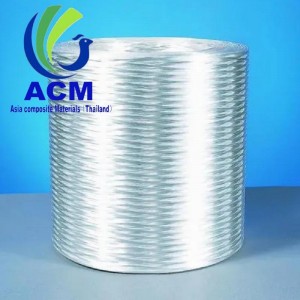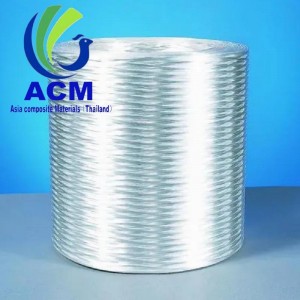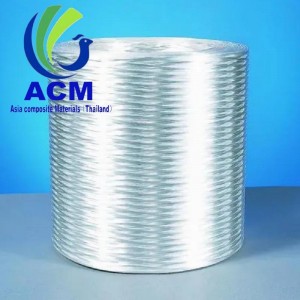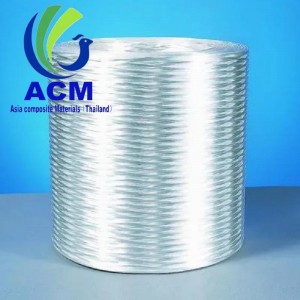-

ECR Fiberglass Direct Roving for Filament Winding
Continuous filament winding process is that the steel band moves in back – and – forth circulation motion. The Fiberglass winding, compound, sand inclusion and curing etc process are finished at moving forward mandrel core at end the product is cut at requested length.
-

ECR Fiberglass Direct Roving for Pultrusion
Pultrusion process involves pulling continuous rovings and mats through an impregnation bath, squeeze-out and shaping section and the heated die.
-

ECR Fiberglass Direct Roving for Weaving
The Weaving Process is that the roving is weaved at weft and warp direction according to certain rules to make the fabric.
-

ECR-Fiberglass Direct Roving for LFT-D/G
LFT-D Process
The polymer pellets and glass roving are melted and extruded through twin-screw extruder. Then the extruded molten compound will be molded directly into injection or compression molding.
LFT-G Process
The continuous roving is pulled through a pulling equipment and then guided into melted polymer for good impregnation. After cooling, the impregnated roving is chopped into pellets of different length.
-

ECR Fiberglass Direct Roving for Wind Power
Weaving Process
Weaving is the process of making unidirectional, multi-axial, compound fabric and other products by crossing two sets of threads over and under each other at weft, warp direction or +45° on weaving machine tor crossing ECR-glass direct roving and chopped strand mat together on stitching machine.
-

ECR-glass Assembled Roving for Spray Up
The assembled fiberglass roving for spray-up is coated with based sizing, compatible with unsaturated polyester and vinyl ester resins. Then it’s cut by the chopper, sprayed with the resin on the mold, and rolled, which is necessary to soak the resin into the fibers and eliminate air bubbles. In the end, the glass-resin mixture is cured into the product.




